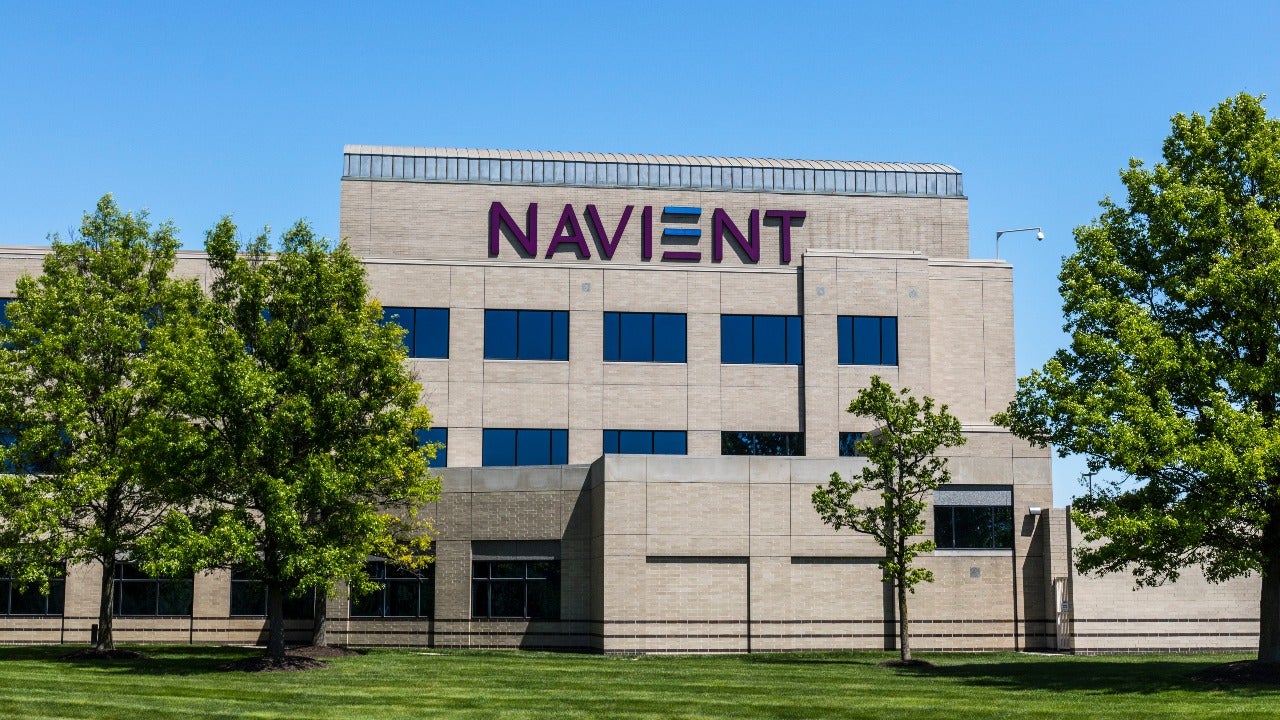As student loan payments resume, financial regrets and stress grip borrowers

Wendy LaManque knows how her life could look without $163,000 in debt from law school holding her back. She had been living it for more than three years when her federal student loans were in forbearance.
Taking advantage of her freed up cash, LaManque and her husband saved for a down payment and bought a house in the Catskills of upstate New York. They paid off their car, eliminated their credit card debt, started an emergency fund for the first time, opened a recording studio as a side business, wrote music for their band and even got a dog.
Now, LaManque’s student loan payments are resuming, and she’s grappling with how the roughly $900 monthly payment could affect her new life and budget. She’s worried about what it’ll mean for taking care of the house. She’ll have to cut back on the dinners out — which were already a rarity — and quit going on vacation. She’s also hunting for an extra income stream so she doesn’t have to tap into the savings she just built up, a sacrifice she knows could tip the scale on her work-life balance and take time away from her hobbies.
“I’m nervous about how I’m going to manage that from a time perspective and what that’s going to do to my health,” LaManque says. “Even if I find a solution that helps me cover my loan payments, I’ll be breaking even and not saving money. … It’s full-on crisis mode over here.”
Roughly 44 million Americans will have to start regularly paying their student loans again when payments resume in October. Many of them are finding that stress, grief and regret are waiting for them at the end of the road.
Nearly a quarter of Americans with student loan debt (24 percent) say borrowing too much for their education is their biggest financial regret, according to a Bankrate survey conducted in June. More than half (or 57 percent) say their stress levels about that regret have been on the rise in the past year, including 26 percent who say it’s grown greatly.
Student loan payments return as borrowers grapple with inflation and rising interest rates
Student loan payments resuming are yet another tax on Americans’ finances right now, piling on top of inflation and the highest interest rates in decades. The average student loan borrower faces a balance worth roughly $37,330 at an interest rate of 6.36 percent, federal education data shows. About 8 percent carry balances of at least $100,000 like LaManque, according to Federal Reserve Bank of New York research.
Their payments can take a lofty bite out of their budgets, averaging roughly $200-$300 a month in 2019 before the pause, according to the Fed. About 1 in 5 student loan borrowers are likely to struggle once their payments resume, according to the Consumer Financial Protection Bureau.
Even so, economists say the broader impact won’t be as fierce. Stephen Stanley at Santander estimates student loan payments could cost borrowers roughly $70 billion a year — a small slice of the nearly $18 trillion consumers spend annually. If consumers cut back on spending one-for-one, it may amount to a 0.4 percent drag on consumption over the next year, with the majority of the pull back occurring in the fourth quarter of 2023, his calculations suggest. That scenario, however, is also the most conservative, he says.
Payments are also returning on the heels of failed help for borrowers. The Supreme Court in June rejected President Joe Biden’s widespread plan to forgive up to $20,000 for eligible borrowers, which would’ve completely wiped away debt for 45 percent of borrowers, according to the administration.
In the hyper-politicized environment we find ourselves in, the focus tends to be very much on the short term, lacking an opportunity to discuss possible solutions for the long-term, such as how public higher education is funded.— Mark Hamrick | Bankrate Senior Economic Analyst
As time on forbearance runs out, borrowers’ fears are resurfacing long-running dilemmas about the costs of higher education. Americans with bachelor’s degrees or more face lower unemployment rates — even in recessions — and higher lifetime earnings. The average college graduate earns about $33,000 more a year than the average worker with only a high-school diploma, a New York Fed study from 2019 shows.
But that extra money isn’t helping many grow their wealth. Student loan debt has caused Americans to delay major financial milestones, from saving for emergencies (27 percent) or retirement (26 percent), paying off credit card debt (24 percent) and buying a house (23 percent), a separate Bankrate survey from April 2022 shows.
“I try not to punish myself or be too hard on myself because, according to the playbook, I did everything I was supposed to do,” LaManque says. “It’s a necessary evil at this point. If you want to have an advanced degree and you don’t come from a wealthy family, you’re going to go into debt.”
Many borrowers say higher education helped them despite its costs
Higher education’s benefits may be one reason why more Americans don’t say taking on too much student loan debt is their biggest financial regret. More than half of student loan borrowers who graduated with their degree (59 percent) said in Bankrate’s April 2022 poll that pursuing an education bolstered their incomes and careers, including 35 percent who said it greatly opened up more job opportunities or expanded their earnings potential.
Just 10 percent said they would not attend college or an educational institution at all when thinking about their student loan debt and what they would’ve done differently in hindsight.
Still, more than two-thirds of student loan borrowers (or 69 percent) would’ve changed something, including:
- Apply for more scholarships (23 percent);
- Work, or worked more, while in school (20 percent);
- Attend a cheaper school (17 percent); and
- Go to community college (15 percent).
Borrowers may also wind up regretting other aspects of their financial life more — even if student loan debt is a reason they fell behind. For Americans who’ve already paid off their balance, the top regret became not saving for retirement early enough (at 24 percent), followed by taking on too much credit card debt (17 percent) and not saving enough for emergencies (13 percent), according to Bankrate’s June survey.
While taking on too much student loan debt was the top financial regret for current student loan borrowers, they also reported other financial shortcomings. Not saving enough for emergencies was the second most common top financial regret (at 17 percent), followed by taking on too much credit card debt (15 percent) and not saving early enough for retirement (13 percent).
To fund their education, borrowers often have no choice but to take on debt
Many Americans don’t have a choice but to take on student debt to fund their education. In the 30 school years spanning 1992-2023, average published tuition and fees increased 65 percent at public two-year schools and 125 percent at public four-year universities when adjusted for inflation, according to the College Board’s trends in college pricing and student aid for 2022. The average price of tuition, fees, room and board at a public four-year university last year ($23,250) accounts for 31 percent of a family’s median income adjusted for inflation nationwide, according to an analysis of Census Bureau data.
Between 1992 and 2022, inflation-adjusted household median income grew about 26 percent between 1992 and 2022, Census data also shows.
Rising tuition means picking up a part-time gig to defray some of the costs of college isn’t always the panacea. Part-time servers at restaurants made an average of $13.98 an hour nationwide in 2022, amounting to roughly $14,539 a year assuming a 20-hour schedule year round, according to the Department of Labor’s modeled wage estimates. Part-time retail salespersons earn $13.60 or $14,144 a year, while line cooks in fast food restaurants make $12.05 an hour or $12,532 a year nationwide.
Americans are aligned that the system isn’t always set up for borrowers. More than 2 in 5 (or 47 percent) of Americans who currently have debt told Bankrate in a study published in August that students are not educated enough about the financial implications before borrowing for their education.
Sometimes financial aid can even come with fine print. If LaManque could do it over again, she says she wishes she would’ve understood the terms of her scholarship better before signing on the dotted line. During her first semester of law school, her grades slipped. She’d found her footing by the second semester and made the dean’s list, but she “couldn’t undo the damage,” she says. She’d already lost her grant.
Before the pause, LaManque was making on-time payments for seven years and still watched her balance grow while being charged a near-7 percent interest rate.
“I have ingrained in me that, ‘You took out these loans. This is your problem. Pay them back. That’s just how it works,’” she says. “The further away I get from being in my late teens and early 20s, the more experience I have with the world and finances, the more I see how backward this entire situation is, that someone with no way to pay back a loan and with no job history could just be handed six figures and say, ‘Good luck kid.’”
Navigating burdensome student loan debt? Here’s 5 tips on how to prepare for repayment without sacrificing your financial goals
1. Do your student loan housekeeping now
Picking up on payments won’t feel like flipping a light switch.
It’s been more than three and a half years since borrowers eligible for forbearance last made a payment. Forgotten passwords, new addresses and different bank accounts can add up to make the process feel extra confusing. Not to mention, 44 percent of borrowers will have a new loan servicer handling their billing when their loans come out of deep freeze, data from the Consumer Financial Protection Bureau shows. Some Americans, meanwhile, may have never had to make payments on their federal student loans.
Borrowers can find which company is handling their billing by logging into their account on studentaid.gov. Then, a priority should be some general student loans housekeeping.
- Verify your information: Update your personal information with your servicer and studentaid.gov account. Then, make sure your servicer has the right bank account on file to charge.
- Figure out your due date: Unless your loans are in a grace period, or in some cases if you made extra loan payments while they were in forbearance, your first payment will be due at some point in October — but not always on the first of the month. At least 21 days before your payment is due, you’ll get your monthly bill. Your servicer will also inform you.
- Enroll in auto pay: Save yourself from the fear of missing a payment and trim your interest by 0.25 percent.
You can contact your servicer by phone or email with any questions. But remember: Millions of other borrowers are likely feeling the same confusion.
“You’re going to find that loan servicers’ call centers are clogged because everyone is trying to contact them,” says Mark Kantrowitz, student loan expert and author. “You could wait on infinite hold.”
2. Find the right payment plan for you — and know some offer forgiveness
Before borrowers can craft a new budget fitting in their loan payments, they’ll need to know how much their bill will be each month by selecting a payment plan.
If you don’t do anything, you’ll be put back on the payment plan you were utilizing before your loans went on pause, Kantrowitz says. The easier route, however, might not be the best one for your finances.
Generally, borrowers can choose a payment plan based on the amount they’ve borrowed — or the amount of discretionary income they make annually. If you’re cash strapped, consider the latter first.
The Department of Education currently offers four main income-based repayment plans:
- Saving on a Valuable Education Plan (SAVE Plan)
- Pay As You Earn Repayment Plan (PAYE Plan)
- Income-Based Repayment Plan (IBR Plan)
- Income-Contingent Repayment Plan (ICR Plan)
A smaller number of borrowers with loans from the Federal Family Education Loan (FFEL) program may be eligible for a separate income-sensitive repayment plan.
To apply for any income-based program, borrowers should fill out an income-driven repayment plan request as soon as possible. You’ll also need to recertify your income each year, after which your payments could go up if your earnings also increase.
Key benefits of the Saving on a Valuable Education (SAVE) plan
- This plan replaces the Revised Pay As You Earn (REPAYE) program
- Payments are based on 10 percent of a borrower’s income that’s 225 percent above the federal poverty line, up from 150 percent for other income-based repayment plans.
- A single borrower who makes less than $32,805, for example, wouldn’t have to pay anything monthly.
- Starting in July 2024, payments for undergraduate loans will be 5 percent of a borrower’s discretionary income.
- Balances are forgiven after 10 years of making payments if you’ve borrowed $12,000 or less, increasing by a year per every $1,000 above that level — but capped at 20 years for undergraduate loans and 25 years for graduate debt.
- If a borrower’s payment doesn’t cover the amount of interest charged each month, the Department of Education will cancel the uncovered portion.
The silver-lining, all income-based plans’ repayment periods last for as little as 10 years to as long as 25 years, depending on how much you borrowed and whether your loans covered your undergraduate or graduate studies. Any remaining balance would be canceled.
But they might not always be the right choice. Higher-income borrowers may actually see a larger payment on an income-based plan.
“A good rule of thumb with income-based repayment plans is, you would have a reduction in your monthly payment if your total debt exceeded your annual income,” Kantrowitz says. “With the SAVE plan, if your total debt is greater than half your income, you’ll get a reduction in your monthly payment.”
Don’t forget about programs that can help you get your loan canceled. If you’re a first responder, teacher or work for a nonprofit, you may also be eligible for Public Service Loan Forgiveness (PSLF), which requires 10 years of payments for forgiveness. Be sure you’re enrolled in an eligible payment plan. Another consideration, some states may pay a portion of your student loans if you move there.
To find the right repayment plan for you, borrowers can utilize studentaid.gov’s loan simulator tool.
3. Don’t stop making payments just because of the on-ramp program
To help borrowers get back in the habit of making payments, the Biden administration introduced a new “on-ramp” program. Borrowers who miss monthly payments between Oct. 1 and Sept. 30, 2024 won’t be considered delinquent, reported to credit bureaus, placed in default or referred to debt collection agencies.
The new program can help temporarily give borrowers some peace of mind if they miss a payment while they’re getting back in the swing of it. But not making payments could cause you to miss out on a lifetime of savings — especially if your monthly payment is affordable under the new SAVE plan or if you’re a borrower eligible for forgiveness after 10 years of making payments.
4. Apply for additional forbearance or deferment if you need it
Borrowers can apply for additional forbearance or deferment through their servicer if they need it, but make sure you’ve exhausted all of your options first.
If you’re employed but worried about being unable to pay your bills, you should first see how much your monthly payment will be on an income-based repayment plan. If it’s $0 a month, you may be able to technically still make student loan payments that count toward cancellation at the end of your repayment window.
Possible options include:
- Unemployment deferment for Americans who are out of work;
- Economic hardship deferment if your income falls below federal poverty lines; and
- Illness-related forbearance programs while undergoing medical treatment.
Borrowers, however, should make sure they’re only using it when they really need it since there’s a limit (typically, up to 12 months at a time for a maximum of 36 months is what’s allowed). Depending on the loan and the plan, you may also be responsible for the interest that accrues.
5. Never sacrifice your long-term goals for paying off your student debt more quickly
Borrowers may want to shed their student debt as quickly as possible, especially if they can afford it. But know that there are major opportunity costs that might end up costing you more in the end — no matter where you are in your life. That’s especially true if you put so much money toward your loans each month that it keeps you from saving for emergencies or retirement.
If you’re hoping to buy a house soon, keeping a low debt-to-income ratio can help you score approval for lenders’ best mortgage rates. Yet, given its attractive benefits for borrowers and generally lower interest rates compared to other types of debt, experts say it might not be a balance to focus on eliminating quickly.
An American who puts $200 into an investing account a month starting at age 22 could earn as much as $1.2 million by the time they’re 70, assuming an 8 percent annual return, Bankrate calculations show. That falls to about $703,000 if Americans can only afford to contribute half of that amount for their first 20 years of investing, assuming that’s how long it takes them to pay off their debt.
Your tax-advantaged accounts may also come in handy if you’re enrolling in an income-driven repayment plan.
“If you are on an income-driven repayment plan, every dollar you can put away towards a pre-tax retirement account will help lower your student loan payment,” says Justin Horsch, student loan advisor at Student Loan Planner. “You can take months off of contributing, but try to invest and save as often as you can towards your future self.”
Why we ask for feedback Your feedback helps us improve our content and services. It takes less than a minute to complete.
Your responses are anonymous and will only be used for improving our website.






